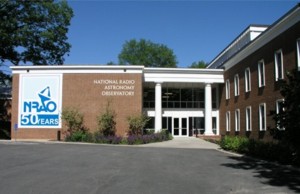Visits to the NAASC

Visits to the NAASC are encouraged in a variety of situations: getting expert assistance for data reduction or proposal preparation, scientific collaborations with NAASC staff on ALMA data, taking advantage of computing facilities for data analysis and paper writing. Visits normally last one week, but they go from a few days up to two weeks. Long-term visits are also possible.
All visitors to NRAO are expected to follow our code of conduct https://info.nrao.edu/hr/Conduct.
General visits
For scientific collaborations with NAASC staff on ALMA data, please coordinate with your local contact. To request such a visit, the visitor should submit a ticket to the “Face-to-face visits” department of the helpdesk. Visitors will have access to office space and, as needed, computer support (see below 'NAASC computer support').
Face to face visits (with expert assistance): virtual and in-person
The NAASC welcomes short-term 'face to face' (f2f) visits from North American-supported investigators of ALMA programs or archival researchers, where users get expert assistance with processing and analyzing ALMA data (including archival data), or with setting up technical aspects of ALMA observing proposals including Large Programs.
These visits can take place either virtually or in-person. Visits typically last from a few hours to a week. A NAASC scientific staff member will be assigned to be the "Support or Host Scientist" for the visit, and will provide science support for the visiting team. Visitors will have access to office space and high-end computing facilities to process their data, plus support from NAASC staff. The Support Scientist will spend up to 2 hours per day with the visiting team. Additionally, up to two ALMA Data Analysts will be assigned to support the visiting team with the data reduction and imaging processes.
If only 1-2 hours of assistance are needed, a 'NAASC chat' can be requested. Chats are an opportunity for a user to interact with NAASC staff members at a dedicated time without committing to a multi-day f2f visit but when they may need more assistance than is practical through a Helpdesk ticket.
A group of up to three visitors can be supported for each visit. Note that an experienced investigator must accompany any student who is new to radio interferometry.
To request a face to face visit, the investigator should submit a ticket to the “Face-to-face visits” department of the helpdesk. In-person f2f visits reduction should be requested at least one month in advance. Virtual f2f visits should be requested at least two weeks in advance. NAASC Chats should be requested at least one week in advance. A visitor program NAASC staff member will contact the ticket submitter to schedule and discuss the proposed visit, and to answer any logistical questions prior to the visit. The visitor program is run on a space and resource-available basis.
Please note: at this time, the NAASC is not offering funding for f2f visits.
What to do Prior to a face to face visit
- Familiarize yourself with the basics of interferometry (e.g., see this resource)
- Familiarize yourself with CASA
- Familiarize yourself with the use of NRAO's Computing Resources.
- For data reduction visits, let the visitor program NAASC staff member know of any special requirements you have for reduction and analysis of your data.
- (if applicable) You will be contacted by a NAASC administrative staff member to help arrange your visit.
Computing support
The NAASC provides dedicated office space and high-end computing facilities for visitors. Special needs or plans to work on a private laptop computer should be discussed with the contact NAASC staff member, via the submitted helpdesk ticket, before arrival. Visitors should also discuss available methods for bringing their reduced data back home with them (external hard drive, ftp, DVD, etc.) before the visit. A copy of the data the visitor has been working on will be kept on the NAASC computers for at least a few weeks after a visit. That way, if there are post-visit questions, the local contact NAASC staff member can look directly at the data, making it much easier to understand any problems.
After a visit, visitors will be invited to submit feedback on the service received and whether the goals of the visit were met.
Transporting Data
Visiting scientists who intend to bring all of their ALMA data home should bring a storage device with them, such as an external hard drive or a laptop with sufficient storage. Keep in mind that ALMA data sets are often several hundred gigabytes. Alternatively, visitors can simply bring back the data reduction script and copy the raw data from the ALMA archive to a computer at their home institute at their leisure.
Accommodation in Charlottesville
There are a number of hotel options available in Charlottesville. General information about recommended hotels can be found here.
Useful Links
Maps & Directions to the NAASC and NRAO in Charlottesville, Virginia
Long-Term Visitors to the NAASC




Connect with NRAO